
Dinah Lee on stage with an Australian soldier, Nui Dat, Vietnam, 1967. Alexander Turnbull Library, PAColl-4801-1-20
Picture this: June 1966, a military base deep in the Vietnamese jungle. Alongside the constant throb of shells being fired and helicopters landing and taking off, a rock band starts to play music on the back of a truck. ANZAC and US soldiers gather around, cheering loudly when a young woman moves to the front of the band and begins to sing.
She’s petite, slim, with a chic haircut and outfit and a voice that commands attention. Singing pulsing R&B anthems, raucous rock’n’roll hits, even a soulful ballad or two, her energy and enthusiasm are infectious. The soldiers roar approval – they may be in a tropical jungle fighting a war they have little understanding of, but there’s one thing they’re sure of: the singer is a star. The ANZACs recognise the singer as one they heard on their transistor radios back home, and whoop as she knocks out her recent hits. The Americans, more familiar with the likes of Diana Ross and Martha Reeves, are stunned by how good the vocalist with a broad Kiwi accent is. As the concert finishes, the singer is sweaty and smiling, adrenalin coursing through her veins, loving the challenge of performing in such challenging circumstances.
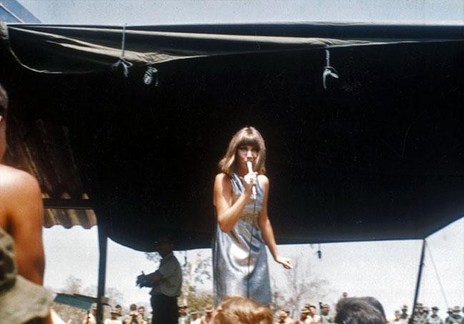
Dinah Lee performing at Nui Dat, Vietnam, 1967. Alexander Turnbull Library, PAColl-4801-1-11
“I ended up singing in Vietnam for the troops in 1966, 1967 and 1972,” says Dinah Lee. “I didn’t think about it. I was asked to sing for the troops in 1966 – it was unpaid – and I was happy to go and do so. I volunteered to return and sing again in 1967 and, this time, I was with the ABC orchestra – you could feel things getting more intense, more on-going artillery fire. It was different, all right, from anything else I had done. And very exciting. We were always well looked after and flew around on helicopters with guys hanging out with machine guns – it was really intense!”
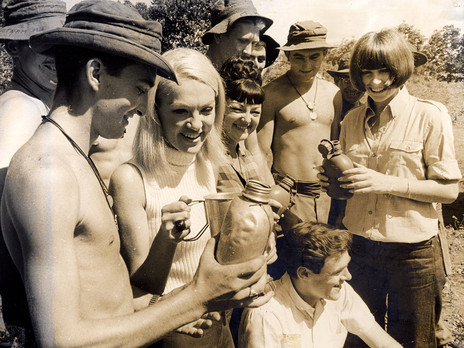
Entertainers Margaret Ward (left), Noni Hazelhurst (centre), Digby Riehards (kneeling) and Dinah Lee (right), meeting Australian troops in 1967 Vietnam, during the Vietnam war (1961-1975). - Diane Marie Jacobs Collection, Alexander Turnbull Library, Wellington, PA1-f-167-64
Dinah Lee turned 80 in 2023, and her octogenarian year involved getting used to living in New Zealand after almost six decades in Sydney. Shifting house and nation is exhausting at any age; to do so aged 79 is extremely challenging, especially when undertaken solo.
“I considered where to live after I lost Doug in 2019 – he was my partner for 40 years,” notes Lee. “All my Sydney friends had relocated to Queensland because they’re of that age but I never considered joining them as I hate the heat. And Sydney was changing so much – it wasn’t the city I once knew and loved. So it struck me as a good time to come home – I have my brother and his family here. And I love where I’m living, Whitby is rather fabulous. I’ve got a lovely home with a view of the lake. Admittedly, shifting was hard – I did it all on my own and it took me a little while to settle in. New Zealand’s not cheap but I’m enjoying being back.”
Dinah’s workload hasn’t slackened since she settled in Porirua. “I was thinking that returning might lead to me retiring but the demand for concerts is stronger than ever.”
Lee is not overstating things – in early October 2023 she undertook her first New Zealand tour in many years as a special guest on Tami Neilson’s Rock N Roll Revue, while regularly returning to Australia.
“Before the Tami tour began I was in Australia playing dates in Wyong, Batemans Bay, Canberra and Sholehaven,” says Lee. “I then joined Tami’s tour on the 5th of October, then flew out to Melbourne on the 7th to play Palm Casino. On the 8th I flew back and on the 9th I was on tour with Tami again. It’s relentless but – you know what? – I love to sing and perform.”

Dinah Lee and Rochelle Vinsen on stage at the Plainsman, Christchurch, in the 1960s. Backing them is The Dynamics.
Dinah Lee is many things, not least a survivor. For readers unaware of New Zealand pop’s greatest singer, here’s a brief biography: Diane Jacobs was born in Christchurch in 1943 and, as a teen, she followed her saxophonist father into that city’s nightclubs, singing with jazz trios. A natural performer with a strong voice and an instinctive sense of how to project a song, she soon found herself popular with the city’s teenagers as she sang dynamic renditions of American rock and R&B songs. Shifting to Auckland, she wowed audiences there and, renamed Dinah Lee, signed to Viking Records. Viking released Lee’s debut 45rpm single, ‘Don’t You Know Yokomo’ (an exuberant recording of a New Orleans R&B tune) in 1964 and it was a hit. It soon became a hit in Australia. Lee was up and running and, truth be told, she’s never stopped: over the next four years Lee would release 15 45s and three albums, enjoying four New Zealand No.1 hits while charting strongly in Australia.
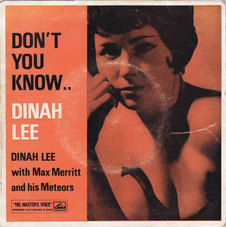
Dinah Lee – Don't You Know EP (Viking, 1964)
“Being a pop star in the 1960s was fun,” says Lee, her voice still conveying the excitement she experienced. “Great fun. And well paid! Not just records and concerts but all kinds of sponsorships. And people were really nice – you hear about musicians dying from drugs and behaving horribly but that wasn’t the case for me, or the people I associated with. We had great times, great parties, met the Shadows and the Stones, toured with really talented people. It was a blast!”
AudioCulture founder Simon Grigg recalls how, as a young pop fan, Lee livened up the local scene. “I can recall Dinah Lee everywhere. It was the beat era, 1964 to 1966, and while we had our own stars none shone brighter than Dinah. Confidence was what Dinah Lee had in bucketloads. When she appeared on TV or, better, on orange Viking 45s that you could play over and over (and I did), it was impossible to ignore the brash, big-voiced young woman from the Garden City. She created the template that countless New Zealand and Australian young women adopted in the years to come. Dinah Lee was an originator and, even better, she was ours.”
Major music industry figures were impressed by the powerhouse chanteuse and tried to launch her internationally. When this didn’t happen, she returned to Australia where she remained an in-demand performer. Actually, demand for Lee in Australia was such that she rarely performed in New Zealand, where promoters were unable to match the fees she received in Oz.
“I now wish I’d played here more often over the decades,” says Lee, “but Australia kept me so busy I guess I overlooked New Zealand.”

Tami Neilson's 2023 Rock'N'Roll Revue, with Dinah Lee, The Up-Doos and the Hot Rockin' Band of Rhythm.
Lee’s resettlement north of Wellington has seen a surge of affection for our pioneering pop icon. Tami Neilson invited her to be the special guest on her Rock N Roll Revue Tour. On stage, Dinah belted out her 60s hits before joining Neilson to duet on ‘Slipping Away’, a song written by (and a 1975 hit for) Max Merritt, the late Christchurch rocker who worked closely with Lee across the 1960s. The blending of Lee and Neilson’s voices was so gorgeous some audience members were moved to tears. “I’m a Dinah fan,” says Neilson, “so it was an absolute honour to share the stage with her.”
Debbie Harwood (of When The Cat’s Away) is also happy Dinah is back. “I have memories of her as one of the very first voices I heard on our transistor radio in 1964 in our kitchen. I was four years old and Dinah’s energetic, bright vocal burst out of that transistor and I would dance to ‘Do The Blue Beat’. She’s our first popular music queen – she started it and, women of Aotearoa, may we never finish it.”
Learning of Lee’s return, Grant Gillanders, the music historian behind Frenzy Records (a label dedicated solely to reissuing Kiwi popular music), approached Lee about giving her back catalogue the kind of treatment it deserved. Thus October 2023 saw the release of The Collection, a single career-spanning CD, and The Complete Collection, a triple CD box-set with a 40-page colour booklet that gathers her entire 60s oeuvre (plus recordings from the 1970s on). As Lee’s original 1960s 45s and LPs are now commanding high prices internationally, the Frenzy compilations are welcomed by those of us not wishing to lay out small fortunes on TradeMe or used-records website Discogs.
“I’m honoured that Grant has given my back catalogue such loving attention,” says Lee. “By remastering the original recordings he makes them sound so fresh and, for the booklet, he’s found so much, including newspaper cuttings from when I was Diane Jacobs and then Diane Lee – the young singer who was transforming into Dinah Lee!”
That New Zealanders have embraced Lee as one of our own again was evident when both reissues shot into the Top Ten of album sales; the last time Dinah troubled our charts was 1966.
“It’s a strange feeling to be in the charts again,” says Lee, “but a good one.”
Dinah is a warm, unpretentious interviewee with no hint of diva behaviour and, unlike some jaded veterans, remains enthusiastic about making music.
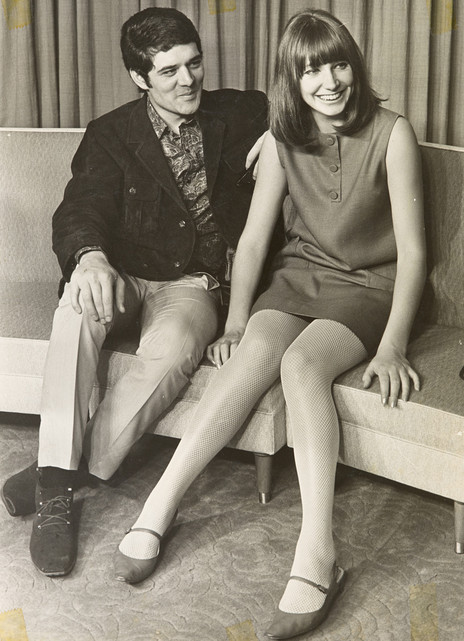
Dinah Lee with Eden Kane, late 60s / early 70s. - Diane Marie Jacobs Collection, Alexander Turnbull Library, Wellington, PA1-f-168-5-1
“Tami Neilson is a powerhouse of a performer,” says Lee of the New Zealand-Canadian chanteuse, “so when she approached me about joining her Rock N Roll Revue I couldn’t refuse. It was exciting to join forces with her and go out and give the audiences a memorable night of music. And to perform again at the Civic Theatre in Auckland – what a fabulous building! Thank goodness it is on the heritage list. I worked there in my early part of my career, singing with PJ Proby and The Searchers, Peter & Gordon, Del Shannon, and Eden Kane on their 1964 New Zealand tours.”

Introducing Dinah Lee (Viking, 1964)
When Dinah Lee broke through in 1964 the hits came fast and furious. After ‘Yokomo’ there was ‘Reet Petite’ and then the brilliant ‘Do The Blue Beat’ (the first New Zealand record to approximate Jamaican rhythms). Her debut album Introducing Dinah Lee was released in December of that year and proved a huge success. While New Zealand had produced local pop stars ever since Johnny Devlin in the mid-1950s, the nation had never before encountered a local singer who matched a great voice with seemingly effortless confidence. Lee loved to perform and this, matched with her mod look – wearing Mary Quant outfits alongside haircuts only previously worn by top UK models – made her an icon for young women. Dinah looked sharp and fresh and sang with a freedom and joy that captured the exuberance of the 60s.
“My father played saxophone and opened a club in Belfast [a suburb of Christchurch] and I started singing there as a teenager,” Lee says of her musical apprenticeship. “Originally, I was singing with a jazz trio – I was 15-16 and enjoyed singing but didn’t see it as a career at the time. Things developed gradually – today a lot of young performers don’t get to learn their craft, they aim to go on TV and become stars extremely quickly. I feel fortunate I had those years where I was an anonymous vocalist singing jazz standards.
“I never took vocal lessons, I just started singing and learnt by listening to records. I got to hear rock’n’roll just as I became a teenager – Connie Francis and Elvis Presley – and it captured my spirit. I loved it! Ella Fitzgerald, Nancy Wilson, Barbara Streisand and Peggy Lee were my inspirations. Singing came naturally to me and I was fortunate that Christchurch then had a thriving live music scene, which is where I learnt my trade.
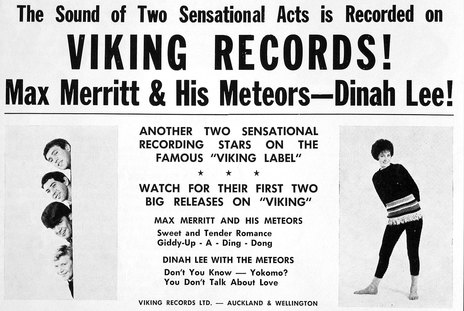
Viking Records advertisment, 1964
“Arriving in Auckland felt like the big time. I followed Max Merritt and Ray Columbus up there as they had both already outgrown the Christchurch scene. Having them here was good for me as I had a base of musicians to work with. My big break came when Lyn Barnett – who was a popular Kiwi singer – had to leave the tour she was on. Max Merritt called me up to see if I could fill her spot on the tour. Well, I stepped into her shoes and sang my heart out.
“That said, my first concert on the tour was a tough one – the audience laughed at me when I bopped out on stage with my mod look! I turned around to leave and Max Merritt, who was leading the backing band, said ‘just keep going’. It was in Taumarunui – can you imagine Taumarunui in early 1964? Most of the audience probably thought an alien had landed amongst them. Then Viking Records signed me – I went into the studio with Max and we recorded the songs I’d been performing. And the Kiwi public just loved them!”

Bobi Petch and Dinah Lee - Photo by Doug Panther. Bobi Petch Collection
As did the Aussie public – having settled in Sydney in 1965, Dinah was soon earning a $1000 a week. Here she was joined by Bobi Petch, an Auckland model and Lee’s best friend. Bobi soon became Dinah’s Girl Friday.
“I returned to Auckland from Sydney for my 21st Birthday in 1964,” says Petch, “and met Dinah for the first time at the Casual Shop, which catered for all the young, fashion-conscious Auckland girls. Dinah had just had her hair cut into that famous bob. She was new to Auckland then, having just shifted up from Christchurch.
“I returned to Sydney a year later to model at Farmers Dept Store, then got the job working with Dinah from her manager. I did Dinah’s hair. She did her own makeup. I’d cook meals, pack suitcases, rehearse the bands: at the time Dinah was travelling alone so I would have a suitcase with the music charts in and I’d make sure the band could run through them before Dinah arrived. Dinah’s manager never went on the road with Dinah, so another of my jobs was to collect the money. I was literally the tour manager and had to oversee all kinds of things.
“Dinah was always a pleasure to work with – we got along fabulously and still do today. She was a consummate professional and never behaved like a diva. We always had a lot of fun together. She really has a great sense of humour and loved to laugh.”
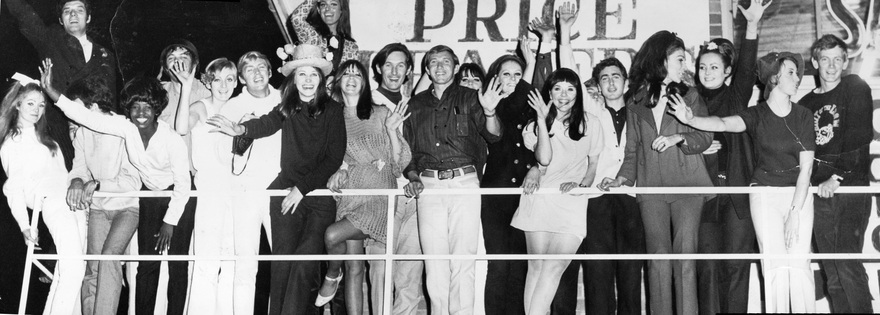
1967 birthday party for Dinah Lee, with Little Millie Small (4th from left), Dinah (in straw hat), Ian Saxon (white trousers), Allison Durbin (next), Bobi Petch (2nd to right) - Bobi Petch Collection
Bobi stopped working for Dinah when she ventured abroad: Lee was invited to London by Chris Blackwell, the founder of Island Records, after he witnessed her performing with Millie Small – the Jamaican singer Blackwell discovered and whose huge hit, ‘My Boy Lollipop’, he had produced. “I went to London and flatted with Millie – who was a wonderful person – and Chris produced and released two 45s on me. Sadly, neither record took off and, after several months of barely working, my funds were running out, so I returned to Australia. It was a compliment to have been signed by Chris Blackwell as he went on to discover Bob Marley and many other great artists.”
A US excursion followed and found Dinah appearing on American TV. “I sang on a couple of American TV programmes – one was Shindig!. It was produced by Jack Good, a legendary character and, for my appearance, he got me to sit on the back of his Vespa scooter as mods drove Vespas and I was known as the ‘Queen of the Mods’. He drove me onto the set on his Vespa and I got off and started singing! The mod fashion hadn’t hit America so Jack Good was fascinated by my look and he liked my singing. On Shindig! I got to sing with Glen Campbell while the Righteous Brothers and Ray Charles were also appearing on these shows – all great artists.”
Issues over US work visas curtailed Lee’s chances of breaking America and, in 1967, Viking Records declined to renew Lee’s contract – her recent 45s had failed to chart. This didn’t faze Dinah as she had plenty of work. Indeed, a music-mad Welsh teenager newly settled in Adelaide caught Dinah in concert that year. “We were £10 Poms having dinner at the Pooraka Hotel with a dinner show and, when the band came on, I thought they were pretty average,” recalls John Dix, now celebrated as author of Stranded In Paradise, the first history of New Zealand pop/rock music. “I didn’t pay much attention until the female singer took over – I’d never heard of Dinah Lee but I soon left the dining table to inch closer to this phenomenal voice. Her 40-minute set was pretty much filled with soul classics, delivered with all the panache of a Dusty Springfield or Etta James.”
The only real misfortune of Lee’s career is, post-Viking Records, she never again was recorded with consistently strong material and sympathetic musicians. She’s recorded some notable songs – including in 2014 releasing ‘Cathedral Square’, a song written by Jordan Luck – but a voice as majestic as Lee’s should have been treasured. Dinah In Memphis? Dinah Sings Motown? Dinah & Ella? What a shame we don’t have these albums.
“I’ve had my ups and downs,” says Lee. “In the 1970s there was glam rock, then disco and other things I didn’t suit as a singer. I focused on doing more cabaret, singing in clubs, just trying to make a living.” Around this time Dinah became a competitive bodybuilder. “That was 40 years ago,” she says of the time when she regularly won trophies. “Today I exercise with light weights and that’s it.”
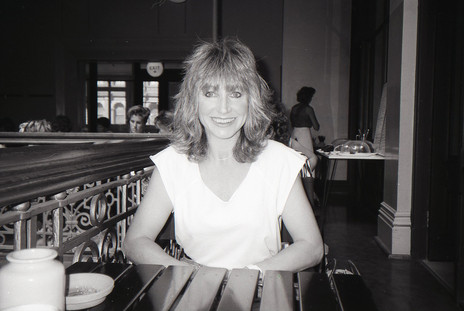
Dinah Lee in Sydney, January 1986. - Chris Bourke
Dinah and Doug Jansen, her guitarist/musical director, became a couple in 1979, working together until his death in 2019. “Doug was a fabulous guitar player. He could read music and conduct bands – heaps of stuff. He made sure whatever I did was really good and helped me look after my business. We really clicked as a couple – musically and in every other way.”
Right now Lee observes that there’s more work on offer than she can undertake, while the success of the Frenzy reissues of her 60s recordings means she is considering releasing new songs.
“I am amazed that there’s still so much demand for us veterans but it’s the music from that era – 60s pop and rock was built to last, it’s not the fleeting music of today. You look at the audience and it takes them back to being teenagers. They love it! Sometimes I wonder if I should retire and then I think of how Mick Jagger – who’s 80 – and Bob Dylan – who’s 82 – are still out there touring and recording and I’m like, ‘right, I’m standing up for us female singers’.”
She laughs then adds, “music is what I have dedicated my life to. I’ve never had another job, never had children, I just focused on my career as a singer – music is all I know. I think my musicality is my greatest strength.”
--
Watch: Dinah Lee, Give It a Whirl interview, 2003